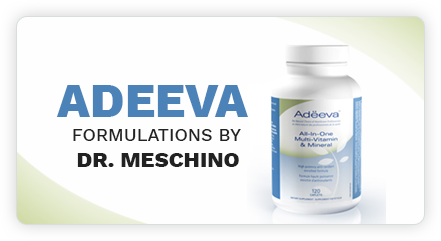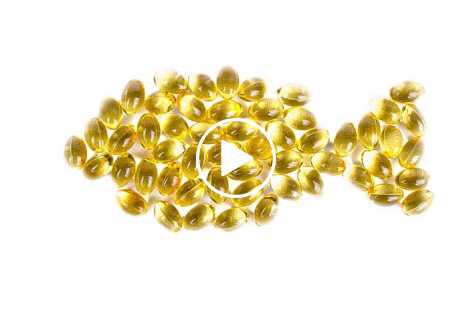
LMU 33 – Unlocking the Puzzle of Fibromyalgia: Exercise as the Key to Empowerment
Source: Medscape Article: Fibromyalgia: Evidence-based Management (Jonathon Kay, MD)
Lifestyle Medicine Update (December 9, 2106)
Introduction:
In the landscape of health, certain conditions are still shrouded in mystery, their intricacies eluding even the most astute medical minds. One such enigmatic entity is fibromyalgia—an arthritic-like affliction that poses a formidable challenge to healthcare providers. With its prevalence touching 2% of the global population, encapsulating around 5 million Americans and over 1.5 million Canadians, fibromyalgia appears as an enigmatic adversary. This condition, which predominantly targets women in a striking 7:1 ratio, often appears during middle age, tightening its grip as the years progress.
Fibromyalgia Unveiled: A Multi-Faceted Reality
Fibromyalgia presents a multidimensional portrait of symptoms, featuring generalized pain, persistent fatigue, and a perpetual sense of unrefreshing sleep. Amidst this constellation of discomfort, migraines cast a tempestuous shadow, accompanied by shooting pains that reverberate through the extremities. The touch of a feather feels like a tempestuous storm, underscoring the heightened sensitivity. Notably, intestinal distress also makes its presence known, manifesting as alternating bouts of diarrhea and constipation. It’s imperative to acknowledge that fibromyalgia is a complex compilation of clinical symptoms, not a standalone disease.
An Unveiled Past: Shaping the Landscape of Fibromyalgia Management
The year 2007 marked a pivotal juncture when the European League Against Rheumatism embarked on a journey to chart a course for fibromyalgia management. The baton was picked up in 2016 by the “Annals of Rheumatic Diseases,” where a consortium of 18 rheumatologists, allied healthcare professionals, and patients from 12 European countries unveiled revised treatment recommendations. This endeavor was catalyzed by a meticulous literature review and a comprehensive meta-analysis of available data. The outcome illuminated a sobering reality—the limited effectiveness of traditional remedies, including painkillers, anti-inflammatories, narcotics, and antidepressants, in grappling with the multifaceted complexities of fibromyalgia.
Exercise: A Paradigm Shift of Transformation
From the midst of this exploration, a resplendent beacon appeared—a revelation that echoed through the corridors of medical discourse. The revised recommendations resounded with clarity: both aerobic exercise and strength training stand as cornerstone pillars in the edifice of fibromyalgia management. Amidst an orchestration of evidence, a singular truth emerged—supervised exercise regimens, embodying aerobic conditioning and strength training, hold the potential to rewrite the narrative of fibromyalgia’s grip. With conviction, researchers declared that these exercise paradigms, forged through a symphony of evidence, hold the transformative power to remold the trajectory of fibromyalgia.
An Inside Perspective: Bridging Science and Practice
Drawing from the canvas of personal clinical practice, insights illuminated the transformative force of exercise. Guiding fibromyalgia patients onto the terrain of the gym floor, the author unveiled the symphony of strength training exercises—a journey that helped the reprogramming of muscles, the dissolution of tenacious adhesions, and the orchestration of rejuvenation within muscles and connective tissues. This symbiotic marriage of strength training and aerobic exercises induced a harmonious equilibrium, fostering tranquility within the nervous system, translating to enhanced sleep quality and respite from intestinal turmoil.
A Revelation Enforced: Forging the Path Forward
The echo of this paradigm-shifting study reverberated at the American College of Rheumatology’s 2016 Annual Meeting in November. A symphony of impact swirled within its wake—an impact that underscored the potency of exercise as a prescription for healing. The resounding proclamation beckons healthcare practitioners to pivot from conventional paradigms, embracing exercise as a potent tool to rekindle vitality in fibromyalgia patients. As the embrace of exercise enfolds, it extends its touch to encompass other holistic therapies, including acupuncture, tai chi, and meditation, uniting in a harmonious dance towards comprehensive healing.
References:
- Carville SF, Arendt-Nielsen S, Bliddal H, et al. EULAR evidence-based recommendations for the management of fibromyalgia syndrome. Ann Rheum Dis. 2007;74:536-541.
- Macfarlane GJ, Kronisch C, Dean LE, et al. EULAR revised recommendations for the management of fibromyalgia. Ann Rheum Dis. 2016 Jul 4. [Epub ahead of print]
- Medscape Review: http://www.medscape.com/viewarticle/872260nlid=111070_1842&src=WNL_mdplsfeat_161206_mscpedit_wir&uac=62515BJ&spon=17&impID=1248279&faf=1
- Fibromyalgia Details: http://www.cdc.gov/arthritis/basics/fibromyalgia.htm
Eat Smart, Live Well, Look Great,
Dr. Meschino
Introduction:
In the landscape of health, certain conditions are still shrouded in mystery, their intricacies eluding even the most astute medical minds. One such enigmatic entity is fibromyalgia—an arthritic-like affliction that poses a formidable challenge to healthcare providers. With its prevalence touching 2% of the global population, encapsulating around 5 million Americans and over 1.5 million Canadians, fibromyalgia appears as an enigmatic adversary. This condition, which predominantly targets women in a striking 7:1 ratio, often appears during middle age, tightening its grip as the years progress.
Fibromyalgia Unveiled: A Multi-Faceted Reality
Fibromyalgia presents a multidimensional portrait of symptoms, featuring generalized pain, persistent fatigue, and a perpetual sense of unrefreshing sleep. Amidst this constellation of discomfort, migraines cast a tempestuous shadow, accompanied by shooting pains that reverberate through the extremities. The touch of a feather feels like a tempestuous storm, underscoring the heightened sensitivity. Notably, intestinal distress also makes its presence known, manifesting as alternating bouts of diarrhea and constipation. It’s imperative to acknowledge that fibromyalgia is a complex compilation of clinical symptoms, not a standalone disease.
An Unveiled Past: Shaping the Landscape of Fibromyalgia Management
The year 2007 marked a pivotal juncture when the European League Against Rheumatism embarked on a journey to chart a course for fibromyalgia management. The baton was picked up in 2016 by the “Annals of Rheumatic Diseases,” where a consortium of 18 rheumatologists, allied healthcare professionals, and patients from 12 European countries unveiled revised treatment recommendations. This endeavor was catalyzed by a meticulous literature review and a comprehensive meta-analysis of available data. The outcome illuminated a sobering reality—the limited effectiveness of traditional remedies, including painkillers, anti-inflammatories, narcotics, and antidepressants, in grappling with the multifaceted complexities of fibromyalgia.
Exercise: A Paradigm Shift of Transformation
From the midst of this exploration, a resplendent beacon appeared—a revelation that echoed through the corridors of medical discourse. The revised recommendations resounded with clarity: both aerobic exercise and strength training stand as cornerstone pillars in the edifice of fibromyalgia management. Amidst an orchestration of evidence, a singular truth emerged—supervised exercise regimens, embodying aerobic conditioning and strength training, hold the potential to rewrite the narrative of fibromyalgia’s grip. With conviction, researchers declared that these exercise paradigms, forged through a symphony of evidence, hold the transformative power to remold the trajectory of fibromyalgia.
An Inside Perspective: Bridging Science and Practice
Drawing from the canvas of personal clinical practice, insights illuminated the transformative force of exercise. Guiding fibromyalgia patients onto the terrain of the gym floor, the author unveiled the symphony of strength training exercises—a journey that helped the reprogramming of muscles, the dissolution of tenacious adhesions, and the orchestration of rejuvenation within muscles and connective tissues. This symbiotic marriage of strength training and aerobic exercises induced a harmonious equilibrium, fostering tranquility within the nervous system, translating to enhanced sleep quality and respite from intestinal turmoil.
A Revelation Enforced: Forging the Path Forward
The echo of this paradigm-shifting study reverberated at the American College of Rheumatology’s 2016 Annual Meeting in November. A symphony of impact swirled within its wake—an impact that underscored the potency of exercise as a prescription for healing. The resounding proclamation beckons healthcare practitioners to pivot from conventional paradigms, embracing exercise as a potent tool to rekindle vitality in fibromyalgia patients. As the embrace of exercise enfolds, it extends its touch to encompass other holistic therapies, including acupuncture, tai chi, and meditation, uniting in a harmonious dance towards comprehensive healing.
References:
- Carville SF, Arendt-Nielsen S, Bliddal H, et al. EULAR evidence-based recommendations for the management of fibromyalgia syndrome. Ann Rheum Dis. 2007;74:536-541.
- Macfarlane GJ, Kronisch C, Dean LE, et al. EULAR revised recommendations for the management of fibromyalgia. Ann Rheum Dis. 2016 Jul 4. [Epub ahead of print]
- Medscape Review: http://www.medscape.com/viewarticle/872260nlid=111070_1842&src=WNL_mdplsfeat_161206_mscpedit_wir&uac=62515BJ&spon=17&impID=1248279&faf=1
- Fibromyalgia Details: http://www.cdc.gov/arthritis/basics/fibromyalgia.htm

Dr. James Meschino
ABOUT THE AUTHOR
Dr. James Meschino, DC, MS, ROHP, is an educator, author, and researcher having lectured to thousands of healthcare professionals across North America. He holds a Master’s Degree in Science with specialties in human nutrition and biology and is recognized as an expert in the field of nutrition, anti-aging, fitness, and wellness as well as the author of numerous books.











